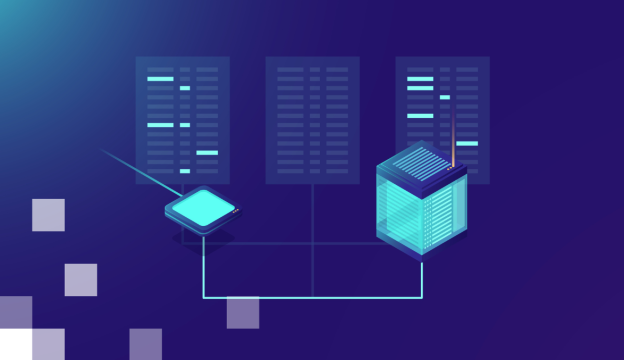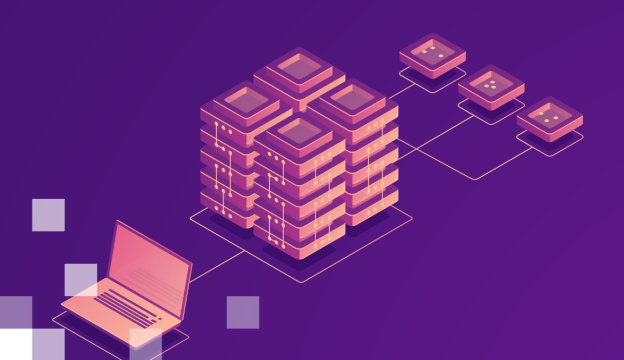Oracle datubāze: SQL un PL/SQL pamati
Mācību ietvaros tiks apgūti SQL un PL/SQL pamati, programmēšanas valodas priekšrocības, izmantojot Oracle Database tehnoloģiju, kā arī relāciju datubāzes jēdzieni.
Šajās mācībās ir apvienoti šādi kursi: Oracle datubāze: SQL Workshop I un Oracle datubāze: PL/SQL pamati.
Uzņēmumiem pieejams ES līdzfinansējums 50% līdz 70% apmērā.
Kopējās mācību izmaksas var mainīties atkarībā no konkrētās asociācijas noteikumiem.
Mācību mērķis
Pilnveidot zināšanas un pramses par:
- datu manipulācijas paziņojumu (DML) palaišanu, lai atjauninātu datus Oracle datubāzē;
- PL/SQL anonīmu bloku izstrādi;
- PL/SQL funkciju un sintakses aprakstīšanu;
- izpildlaika kļūdu apstrādi;
- saglabāto procedūru un funkciju apstrādāšanu;
- PL/SQL programmēšanas konstrukciju izmantošanu un koda plūsmas (ciklus, vadības struktūras un nepārprotamus kursorus) kontroli;
- kursoru izmantošanu rindu apstrādei;
- Oracle datubāzes galveno strukturālo sastāvdaļu noteikšana;
- rindu un kolonnu datu izgūšana no tabulām, izmantojot komandu SELECT;
- pārskatu par sakārtotiem un ierobežotiem datiem izveidi;
- SQL funkciju pielietošanu datu ģenerēšanai un pielāgošanai;
- datu parādīšanu no vairākām tabulām, izmantojot ANSI SQL 99 JOIN sintaksi;
- apkopoto datu pārskatu izveidi;
- datu definīcijas valodu (DDL) priekšrakstu palaišanu shēmas objektu izveidei un pārvaldībai.
Mērķauditorija
- Lietojumprogrammu izstrādātāji;
- Veidlapu izstrādātāji;
- Funkcionālie īstenotāji;
- PL/SQL izstrādātāji;
- Portāla izstrādātāji;
- Pārskatu izstrādātāji;
- Tehniskie konsultanti.
Pēc mācībām tu spēsi
- Pielietot PL/SQL programmēšanas valodu Oracle datubāzu vadības sistēmā.
- Rakstīt vaicājumus pret vienu un vairākām tabulām, manipulēt ar datiem tabulās un izveidot datu bāzes objektus.
- Izmantot vienas rindas funkcijas, lai pielāgotu izvadi.
- Izsaukt konvertēšanas funkcijas un nosacījuma izteiksmes.
- Izmantot grupas funkcijas, lai ziņotu par apkopotiem datiem.
- Izveidot lietojumprogrammas koda PL/SQL blokus, kurus var koplietot vairākās veidlapās, atskaitēs un datu pārvaldības lietojumprogrammās.
- Izstrādāt anonīmus PL/SQL blokus, saglabātās procedūras un funkcijas.
- Izmantot DML priekšrakstus, lai pārvaldītu datus.
- Izmantot DDL priekšrakstus, lai pārvaldītu datubāzes objektus.
- Noteikt PL/SQL mainīgos.
- Nosacīti kontrolēt koda plūsmu (ciklus, vadības struktūras).
- Aprakstīt saglabātās procedūras un funkcijas.
- Izgūt rindu un kolonnu datus no tabulām.
Priekšnoteikumi mācību apmeklēšanai
Jāpārzina programmēšanas jēdzieni, kā arī datu apstrādes jēdzieni un metodes.
Mācību materiāli
Oracle University vai BDA sagatavoti mācību materiāli.
Sertifikācijas eksāmens
Nav paredzēts.
Programma
1. Ievads
-
Oracle datubāze 12c un ar to saistīto produktu pārskats;
-
Pārskats par relāciju datubāzes pārvaldības koncepcijām un terminoloģiju;
- Ievads SQL un tās izstrādes vidē;
- HR shēma un izmantotās tabulas;
- Oracle datubāzes dokumentācija un papdilu resursi.
2. Datu izgūšana, izmantojot SQL SELECT paziņojumu
- SQL SELECT uzskaites iespējas;
- Datu atskaites ģenerēšana;
- Aritmētisko izteiksmju un NULL vērtības izmantošana;
- Kolonnu aizstājvārdu izsaukšana;
- Burtiskās rakstzīmju virknes un DISTINCT atslēgvārds;
- Tabulu struktūru atainošana, izmantojot DESCRIBE komandu.
3. Ierobežotie un sakārtotie dati
- Vaicājumu rakstīšana, izmantojot WHERE funkciju;
- Salīdzināšanas un loģisko operatoru aprakstīšana;
- Salīdzināšanas un loģisko operatoru prioritātes noteikumu aprakstīšana;
- Rakstzīmju virknes lietojums WHERE klauzulā;
- Vaicājumu rakstīšana, izmantojot ORDER BY klauzulu;
- Izvades kārtošana augošā un dilstošā secībā;
- Mainīgo aizstāšana.
4. Vienas rindas funkciju izmantošana izvades pielāgošanai
- Atšķirību uzskaitīšana starp vienas un vairāku rindu funkcijām;
- Manipulēšana ar virknēm, izmantojot rakstzīmju funkcijas;
- Manipulēšana ar skaitļiem, izmantojot ROUND, TRUNC un MOD funkcijas;
- Aritmētika ar datumu datiem;
- Manipulēšana ar datiem, izmantojot DATE funkcijas.
5. Konversijas funkcijas un nosacījuma izteiksmes
- Tiešo un netiešo datu tipu konvertēšanas aprakstīšana;
- TO_CHAR, TO_NUMBER un TO_DATE konvertēšanas funkciju aprakstīšana;
- Vairāku funkciju ligzdošana;
- NVL, NULLIF un COALESCE funkciju izmantošana datiem;
- IF, THEN, ELSE loģikas izmantošana SELECT priekšstatā.
6. Datu apkopošana, izmantojot grupas funkcijas
- Datu apkopošanas funkciju izmantošana SELECT priekšstatos jēgpilnu pārskatu izveidei;
- AVG, SUM, MIN un MAX funkciju raksturojums;
- Kā grupas funkcijā rīkoties ar nulles vērtībām;
- Datu sadalīšana grupās, izmantojot GROUP BY klauzulu;
- Datumu grupu izslēgšana, izmantojot HAVING klauzulu.
7. Datu atspoguļošana no vairākām tabulām
- SELECT paziņojumu rakstīšana, lai piekļūtu datiem no vairāk nekā vienas tabulas;
- Tabulu apvienošana, izmantojot SQL:1999 Syntax;
- Datu skatīšana, izmantojot ārējos savienojumus;
- Tabulas savienošana, izmantojot pašsavienojumu;
- Šķērssavienojumu izveide.
8. Apakšvaicājumu izmantošana
- Apakšvaicājumu izmantošana problēmu risināšanai;
- Vienas rindas apakšvaicājumi;
- Grupas funkcijas apakšvaicājumā;
- Vairāku rindu apakšvaicājumi;
- Vairāku rindu apakšvaicājumi, izmantojot ANY un ALL operatorus;
- EXISTS operatora izmantošana.
9. SET operatori
- SET operatoru raksturojums;
- SET operatora izmantošana vairāku vaicājumu apvienošanai vienā;
- UNION, UNION ALL, INTERSECT un MINUS operatoru raksturojums;
- Klauzulas ORDER BY izmantošana Set Operations sadaļā.
10. Datu manipulācijas
- Jaunu rindu pievienošana tabulai;
- Datu mainīšana tabulā;
- DELETE un TRUNCATE izmantošana;
- Kā saglabāt un atcelt izmaiņas, izmantojot COMMIT un ROLLBACK;
- Lasīšanas konsekvences ieviešana;
- FOR UPDATE klauzules aprakstīšana.
11. DDL paziņojumi tabulu izveidei un pārvaldībai
- Datubāzes objektu kategorizēšana;
- Tabulu izveide;
- Datu tipu raksturojums;
- Ierobežojumu izprašana;
- Tabulas izveide, izmantojot apakšvaicājumu;
- Tabulas mainīšana;
- Tabulas nomešana.
12. Citi shēmas objekti
- Datu no skata izveide, modifikācjia un izgūšana;
- Darbību veikšana, izmantojot datu manipulācijas valodas (DML);
- Skata nomešana;
- Secības izveide, izmantošana un modificēšana;
- Indeksu izveide;
- Sinonīmu izveide.
13. Ievads PL/SQL
- PL/SQL pārskats;
- PL/SQL apakšprogrammu priekšrocību uzskaite;
- Pārskats par PL/SQL bloku veidiem;
- Vienkārša anonīma bloka izveide;
- Izvades ģenerēšana no PL/SQL bloka.
14. PL/SQL identifikatori
- Dažādu identifikatoru veidu uzskaite PL/SQL apakšprogrammā;
- Deklarācijas sadaļas izmantošana identifikatoru definēšanai;
- Mainīgo lielumu izmantošana datu glabāšanai;
- Skalārie datu veidi;
- %TYPE atribūts;
- Mainīgo sasaitīšana;
- Secība PL/SQL izteiksmēs.
15. Izpildāmu paziņojumu rakstīšana
- Pamata PL/SQL bloku sintakses vadlīnijas;
- Koda komentēšana;
- SQL funkcijas PL/SQL;
- Datu tipa konvertēšana;
- Ligzdoti bloki;
- Operāciju veikšana PL/SQL.
16. Mijiedarbība ar Oracle serveri
- SELECT paziņojumi PL/SQL datu izgūšanai;
- Datu manipulācijas serverī, izmantojot PL/SQL;
- SQL kursora koncepcija;
- SQL kursora izmantošana, lai iegūtu atsauksmes par DML;
- Darījumu saglabāšana un atcelšana.
17. Kontroles struktūras
- Nosacīta apstrāde, izmantojot IF paziņojumus;
- Nosacīta apstrāde, izmantojot CASE paziņojumus;
- vienkāršs LOOP paziņojums;
- WHILE LOOP paziņojums;
- FOR LOOP paziņojums;
- Paziņojuma turpinājums.
18. Salikto datu tipu izmantošana
- PL/SQL ieraksti;
- %ROWTYPE atribūts;
- PL/SQL ierakstu ievietošana un atjaunināšana;
- Asociatīvie masīvi (INDEX BY Tables);
- INDEX BY Table metodes;
- INDEX BY Table ieraksti.
19. Skaidri kursori
- Izpratne par kursoriem;
- Kursora deklarēšana;
- Kursora atvēršana;
- Datu iegūšana no kursora;
- Kursora aizvēršana;
- Kursors FOR LOOP;
- Skaidri kursora atribūti;
- FOR UPDATE un WHERE CURRENT klauzulas.
20. Izņēmumu apstrāde
- Kas ir izņēmumi;
- Izņēmumu apstrāde ar PL/SQL;
- Iepriekš definētas Oracle servera kļūdas;
- Iepriekš nedefinētas Oracle servera kļūdas;
- Lietotāja definēti izņēmumi;
- Izņēmumu izplatīšana;
- RAISE_APPLICATION_ERROR procedūra.
21. Saglabātās procedūras un funkcijas
- Kas ir saglabātās procedūras un funkcijas;
- Atšķirības starp anonīmiem blokiem un apakšprogrammām;
- Vienkāršas procedūras izveide;
- Vienkāršu procedūru izveide ar IN parametru;
- Vienkāršas funkcijas izveide;
- Vienkāršas procedūras izpilde;
- Vienkāršas funkcijas izpilde.
Ja vēlies uzzināt vairāk par šīm mācībām, sazinies ar mums pa tālruni 67505091 vai raksti e-pastu uz mrn@bda.lv.











